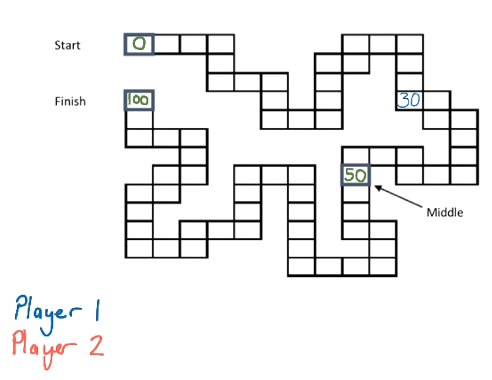Number (order and place value)
Lesson
In this chapter you have been choosing whether numbers are
< (less than) or > (greater than) other numbers.
Find a partner and try this game for practice. The winner is the last person to write down a number!
Materials
- An empty playing board (you can make this yourself or use a template like this one)
- a coin, where heads means less than and tails means greater than
Get Ready
- Pick a maximum number (100 or 1000 might be best the first time you play) and a minimum number (0 might be best at first).
- Find the number half way between the maximum and minimum. This is the middle number.
- Write all three numbers on their squares in the race track. Put the minimum number at the start and the maximum number at the finish.
Game Rules
- Take turns tossing the coin.
- If you toss heads - write a number less than the last number written (or the middle number if you're starting off)
- If you toss tails - write a number greater than the last number written
- All numbers on the track must go in order.
- The last person who can write down a number is the winner!
Variations
- Change the maximum and minimum numbers.
- Try new rules like "no even numbers," or "all numbers must be multiples of 5."
- Give it a fun spin, like "the winner is the player who puts 4 of their own numbers in a row."
Example Game
Player one tosses heads, and would have to write a number that is less than the middle number. They write the number 30.

Player two tosses a tail. They have to write a number that is bigger than 30, they could write in the 60 or 40 for example.

or

would both be acceptable.
Play continues until...
Player 2 just wrote down the number 46, player 1 tosses a smaller than, but there is no space for them to write in a number smaller than 46. So Player 2 is the winner!


